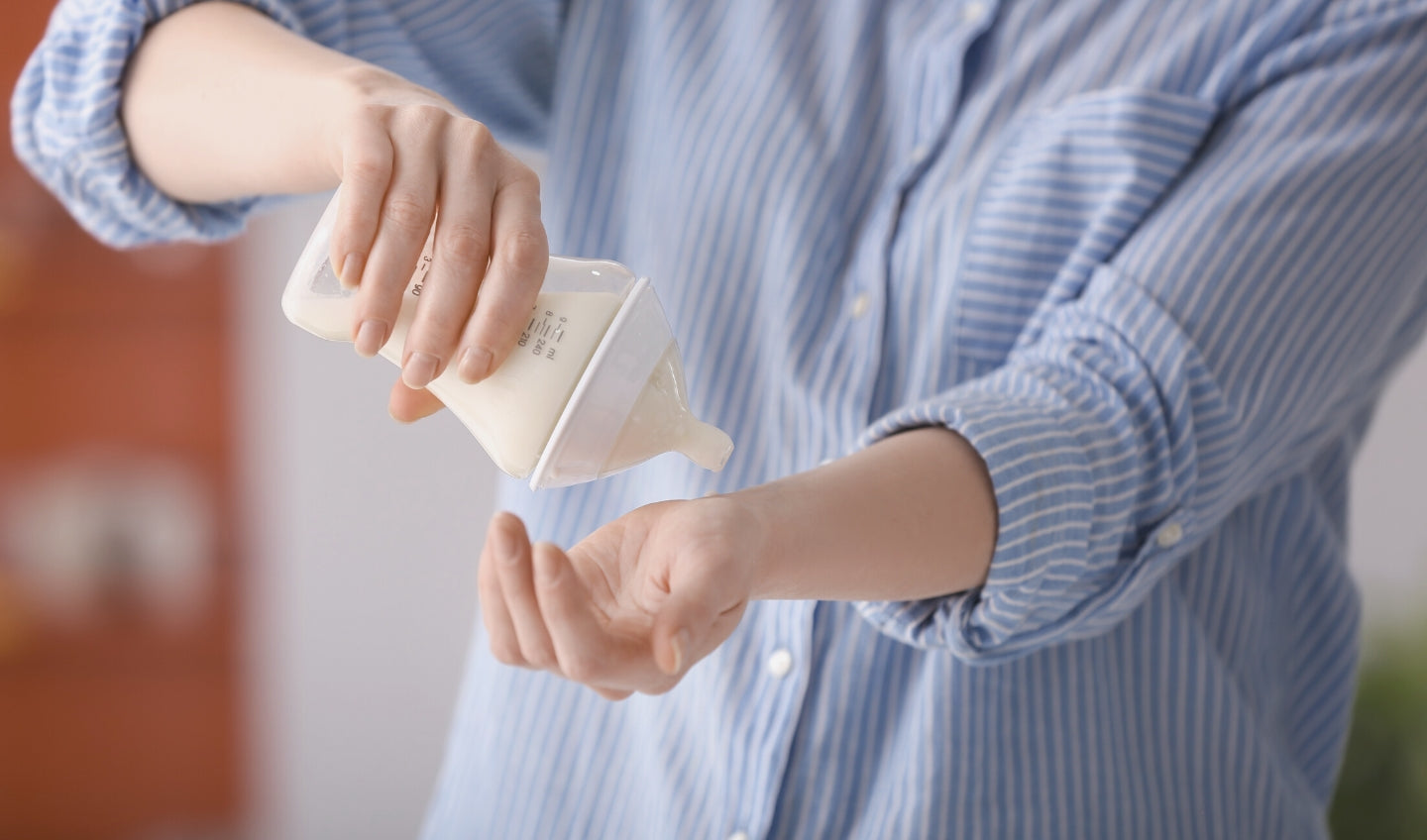Have you ever found yourself staring at that half-full bottle of formula, wondering if you can safely reheat it for your little one? You’re not alone.
Every parent wants the best for their baby, and with busy schedules, it’s tempting to make the most of every prepared bottle. But is reheating unused formula safe and healthy for your child? Understanding the risks and best practices can ease your worries and keep your baby safe.
Stick around, because this article will guide you through everything you need to know about reheating formula, giving you peace of mind and ensuring your baby’s wellbeing.
Table of Contents
Reheating Formula Basics
Many parents wonder if they can reheat unused formula. Safety is the main concern here. Formula can grow germs if not handled right. Always use clean hands and bottles. When reheating, warm formula in a bowl of warm water. Avoid using the microwave. It heats unevenly and can create hot spots. Always test the temperature before feeding. Put a drop on your wrist. It should feel lukewarm, not hot. If it feels too warm, let it cool. If the formula has been out for more than an hour, do not reheat. It’s best to make fresh formula for each feed. This keeps your baby safe.
Potential Risks Of Reheating
Reheating unused formula can be risky. Babies have sensitive stomachs. Bacteria can grow in leftover formula. This makes the milk unsafe to drink. Nutrients in formula can break down when reheated. This reduces its healthy benefits. The reheated formula might also taste different. Your baby may not like it. Formula safety is important. Always use fresh formula for your baby. Throw away any unused portions. This keeps your baby safe and healthy.
Proper Storage Techniques
Storing baby formula safely is very important. Unused formula should be put in the fridge right away. Use a clean bottle for storage. Label the bottle with the date and time. Formula can stay fresh for 24 hours in the fridge. Don’t keep it for longer. Warm formula before giving it to a baby. Never use a microwave to warm formula. A microwave can make hot spots. These spots might burn the baby’s mouth.
Use a bowl of warm water to heat the formula. Test the temperature before feeding. Throw away any formula not used. Safety is key. Always wash hands before handling formula. Keep the fridge clean and organized. Check for any spills or leaks. Clean any mess quickly. Proper storage keeps the formula safe for the baby.

Credit: babymilkbar.com
Safe Reheating Methods
Reheating formula is tricky. It can spoil quickly. Always follow safe methods. Use a bottle warmer for best results. It heats evenly. Avoid microwaves. They heat unevenly. Hot spots can burn baby’s mouth.
Warm water bath is another way. Place the bottle in warm water. Let it sit for a few minutes. Shake well before serving. This ensures even heat. Always test the temperature on your wrist. It should be warm, not hot.
Do not reheat more than once. Bacteria grows fast in formula. Always prepare fresh if possible. This keeps your baby safe and healthy.
Signs Of Spoiled Formula
Spoiled formula smells bad. It might have a sour or strange odor. If the formula looks different, don’t use it. Lumps or clumps mean it’s gone bad. The texture should be smooth. A change in color is another sign. The formula should be its usual color. If it looks off, throw it away. Babies can get sick from bad formula. Always check the expiration date. It’s important for safety.

Credit: themilkybox.com
Alternatives To Reheating
Fresh formulais best for babies. You can make small amounts. Try mixing only what your baby needs. Store formulain the fridge if baby doesn’t finish. Use it within 24 hours. Refrigerated formulakeeps it safe from germs. Always test the temperature before giving it to your baby. Use your wrist or a thermometer. It should be warm, not hot.
Consider using ready-to-feed formula. This option doesn’t need reheating. It’s easy and quick. Good for traveling. Always follow instructions on the label. Each brand may have different rules.
Another choice is powder formula. Mix it with warm water. This way, it’s fresh each time. Always check the water temperature. It should be warm, not scalding.
Expert Opinions
Reheating baby formula can be risky. Experts warn against it. Bacteria may grow in cooled formula. Heating formula again could make it unsafe. Always check the temperature. Warm formula is better than hot.
Formula has important nutrients. Reheating might change these nutrients. Heat changes the formula’s quality. Babies need the right nutrients. Fresh formula is best for babies. Unused formula loses value over time.
- Discard unused formula after feeding.
- Prepare fresh formula each time.
- Follow instructions on the formula package.
- Never leave formula out for long.
- Consult a doctor for formula advice.

Credit: organicsbestshop.com
Conclusion
Reheating unused formula needs care and attention. Follow safety guidelines closely. Fresh formula is always best for your baby. Reheated formula may lose nutrients. Check the temperature before feeding. Use formula within one hour after reheating. Discard unused formula to avoid bacteria growth.
Avoid microwaving formula for even heating. Warm water is safer for reheating. Trust your instincts as a parent. Choose what feels right for your baby. Prioritize health and safety with formula use. Always consult healthcare professionals for guidance. Your baby’s well-being comes first.
Be informed and make safe choices.

I am Brianna, a self-published author with a passion for sharing my knowledge and expertise on various topics with people looking to find the perfect items for their needs. I love ensuring that the right informative content is available to people looking for the right information. I am an avid horseback rider and reader when I am not writing.
Follow me on Facebook, TikTok, or Personal Blog.